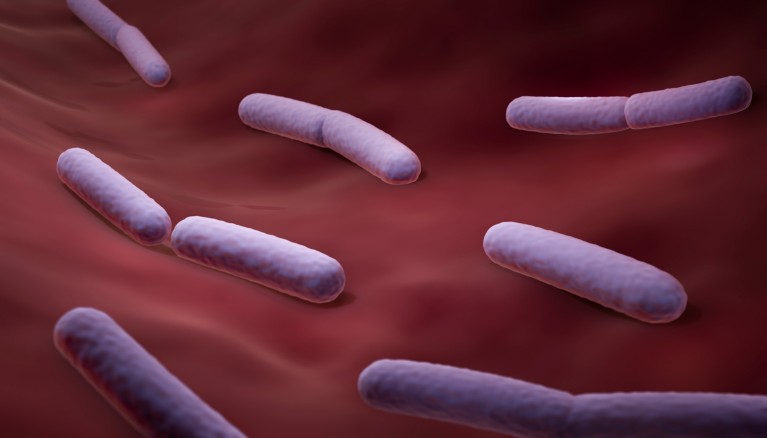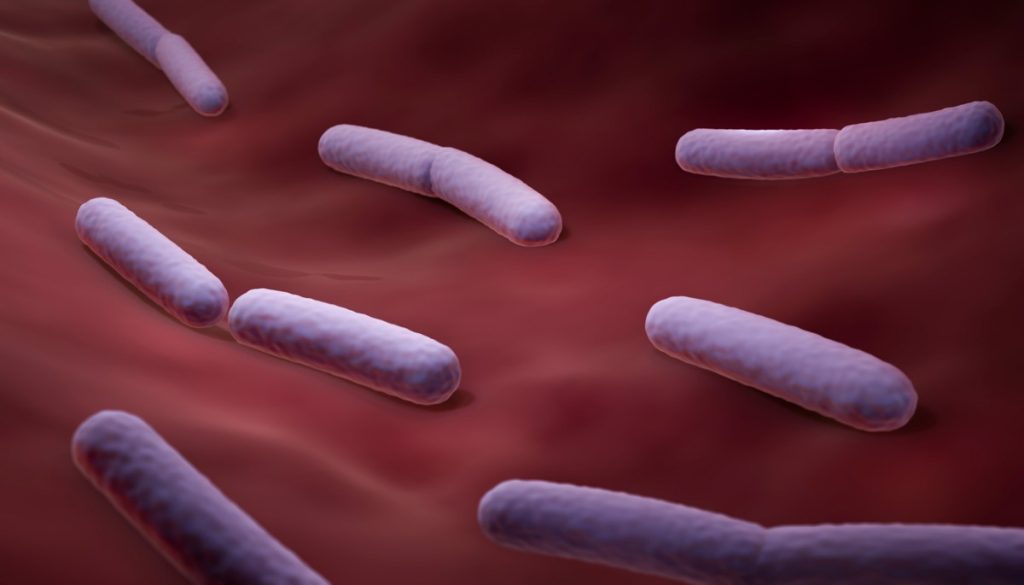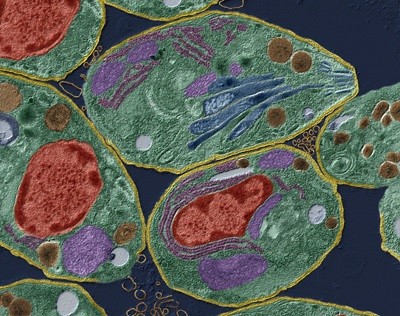
Lactobacillus bacteria (artist’s illustration) have been genetically engineered to make molecules that travel from the nose to the brain.Credit: Artur Plawgo/Science Photo Library
A healthier brain could one day be just a snort away: bacteria that colonize the nose have been engineered to ferry drugs to the brains of mice.
On 5 February, scientists reported in Cell1 that they have used nasal bacteria to deliver appetite-suppressing hormones to obese mice, which subsequently lost weight. Although the approach is still a long way from being used in humans, it is one of the latest examples of widespread efforts to harness bacteria to deliver drugs to where they are needed in the body more effectively. Another study, published today in Cell Systems2, uses a different bacterial species to deliver a protective enzyme to skin cells.
“Drugs often don’t get to where they need to go very well,” says Shannon Sirk, a bioengineer at the University of Illinois at Urbana–Champaign, who was not involved in the studies. “If you can improve delivery, you can minimize side effects and reduce the burden on patients.”
Gut feeling
Many attempts to engineer drug-secreting bacteria have focused on delivering molecules to the gut, says Sirk. The microbial flora in the gut is lush with bacteria that could carry a medical payload, including strains of Escherichia coli, a laboratory workhorse that is easy to genetically engineer. But the studies reported this week have ventured to other regions of the body and explored the capabilities of less familiar bacteria.
The brain is a particularly unusual site for a bacterial delivery system to target, says Cammie Lesser, a synthetic microbiologist at Massachusetts General Hospital in Boston, because it is protected by a barrier that generally excludes microbes, as well as some molecules.
Engineered brain parasite ferries useful proteins into neurons
To get around this, Matthew Wook Chang, a synthetic biologist at the National University of Singapore, and his colleagues decided to harness a little-studied gateway to the brain: the nose. The first step was to determine which potentially useful microbes reside there. “The nasal microbiome remains relatively unexplored, despite the nasal cavity’s direct connection to the brain,” says Chang.
The authors examined several bacteria, including five strains of Lactobacillus, a genus that is generally considered safe and is sometimes used in health supplements. The team then screened these strains for their ability to bind to a molecule that is found on a membrane called the olfactory epithelium. This lines part of the upper nasal passageway and is connected to the brain by nerves that are important for the sense of smell. Although bacteria are unlikely to travel from the nose to the brain, some molecules can diffuse along this path.
Once the researchers had found a suitable strain, Lactobacillus plantarum, they genetically engineered it to produce and secrete a variety of molecules, including three appetite-regulating hormones. Obese mice that received a dose of the bacteria in their nose each day for eight weeks ate less and lost weight during the treatment period1.









